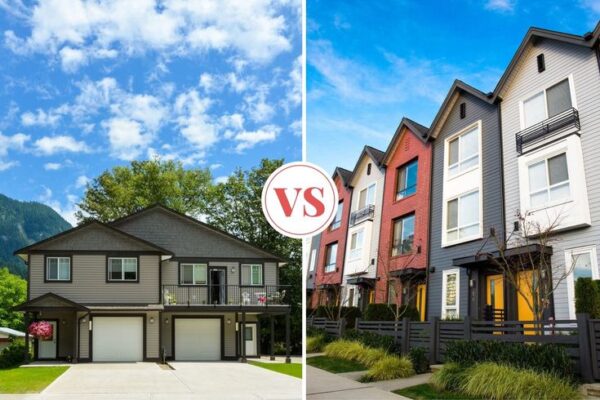
As a property investor and prospective landlord, you’ll have a choice between single family and multi-family properties. Each type of property carries distinct upsides and risks, so it’s not fair to say that one type of property is strictly superior to the other.
However, there are some cases where a multi-family property is advantageous over a single-family property. What are these conditions and how can you evaluate them?
Multi-Family vs. Single-Family Real Estate
There are many different ways to invest in real estate, regardless of which types of properties you choose. Both single-family and multi-family can be valuable additions to your portfolio. So what makes them different?
As their names suggest, the main difference is the number of families who can live within that property – in other words, the number of separate units. An apartment building is a classic example of a multi-family property; it’s a single property that can house many different families and individuals in separate quarters. Duplexes and triplexes are similarly considered multi-family properties.
In contrast, a single-family property is only one unit and can only accommodate one family.
Advantages of Multi-Family Real Estate
These are the primary advantages of multi-family real estate investments:
- More revenue. More families means more people paying you rent every month. Multi-family properties, accordingly, generate more revenue than their single-family counterparts. Obviously, you can make up for this single-family property disadvantage by buying more of them, but this presents new complications. If you’re interested in strictly increasing your revenue, multi-family properties are better.
- More consistent cash flow. Multi-family properties are also advantageous for their cash flow consistency. In a single-family property, a vacancy means you’re generating no income. In a multi-family property with 10 units, a single vacancy means you’re generating 90 percent of your usual income. Vacancies are never a good thing, but they’re much less impactful and more manageable in a multi-family setting.
- Potentially easier financing. In some cases, financing for multi-family properties can be easier to secure. These properties generate more revenue and are less prone to vacancy problems, so they’re seen as less risky by some financial institutions. This doesn’t guarantee you’ll be able to find financing, but it’s worth considering.
- Better tax benefits. All rental properties offer significant tax advantages, but those tax advantages accumulate more in a multi-family property due to the sheer scale of the property.
- Faster scalability. Some property investors appreciate multi-family properties because they allow them to scale their investment strategy faster. Each property purchase is going to take time and effort, so if your goal is to increase your total number of units and total revenue, it makes sense to minimize the number of individual property purchases. Think about it this way: would you rather hunt down and buy 10 individual single-family properties or a single, multi-family property with 10 units?
Disadvantages of Multi-Family Real Estate
These are some of the downsides:
- A higher purchase price. As you might imagine, as the number of units within a property increases, so does its purchase price. An apartment building with 12 units is going to be much more expensive than a traditional family home. Because of the increased revenue and cash flow stability, many investors are unphased by this disadvantage. However, if you’re working with limited funds and you’re not confident about your ability to finance the property, this could be a major deterrent.
- More responsibilities. You also need to consider the fact that because each unit is going to require tenant screening, rent collection, maintenance, and potentially emergency repairs, multi-family properties introduce more responsibilities to you as the landlord.
- Greater competition. As anyone who tried to buy a home in the past few years can tell you, excessive competition in the real estate market can be downright painful. With prospective home buyers and investors swarming the market, prices are pushed higher, bids are more competitive, and inventory begins to dwindle. One of the biggest disadvantages of looking for multi-family properties is that many other real estate investors are constantly looking for them. You’ll have to contend with some powerful people with deep pockets if you want to make this type of investment.
- Higher risks. Multi-family properties work out great in neighborhoods with high demand and a solid financial strategy. But because they’re more expensive and more complex, they’re also riskier. If your multi-family property management strategy fails, it could cause you devastating losses.
When Is Multi-Family Real Estate Investing Better Than Single-Family?
Multi-family rental properties could hypothetically have a place in almost any real estate portfolio. But there are some conditions where it’s the clearly superior choice. If you’re optimizing for cash flow consistency, if you’re trying to scale your portfolio quickly, and if you have plenty of money to spend, go multi-family. Otherwise, single-family properties are a perfectly viable alternative.


